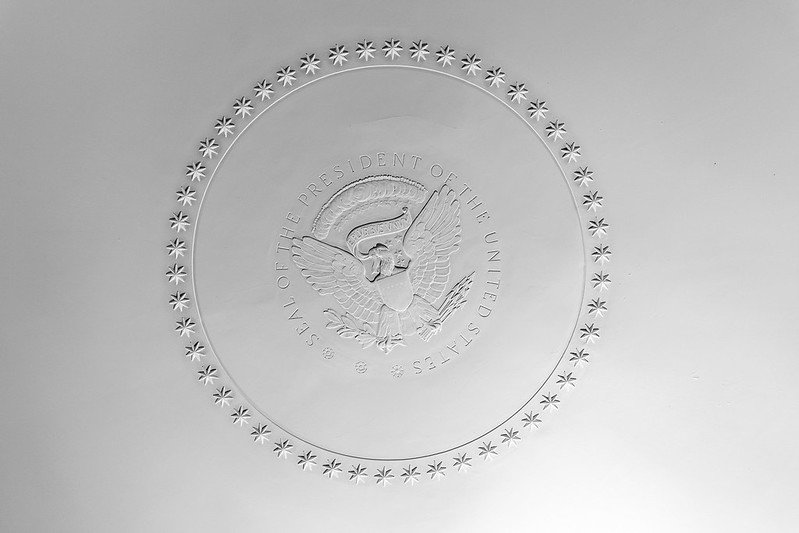 This two-part Common Sense Paper explains the history of Presidential succession both prior to and following the ratification of the 25th Amendment. Part 1 focuses on the early history of Presidential succession, from the ratification of the Constitution until 1967. This paper (Part 2) focuses on the drafting and ratification of the 25th Amendment to the Constitution.
This two-part Common Sense Paper explains the history of Presidential succession both prior to and following the ratification of the 25th Amendment. Part 1 focuses on the early history of Presidential succession, from the ratification of the Constitution until 1967. This paper (Part 2) focuses on the drafting and ratification of the 25th Amendment to the Constitution. Presidential Succession: The Road to Congressional Action
As discussed in Part 1, the eighth and final transition of power from a President to a Vice President under the Constitution’s original Presidential Succession Clause (Article II, Section 1, Clause 6) took place on November 22, 1963, when Vice President Lyndon B. Johnson took the oath of office aboard Air Force One on the runway at Dallas Love Field shortly after the assassination of President John F. Kennedy. While Kennedy’s assassination was the final straw that set the 25th Amendment on the road to enactment, changing the Presidential Succession Clause had been under serious and sustained discussion in Congress since 1955, when President Eisenhower suffered from a heart attack. That year, both the House and Senate Judiciary Committees held hearings on potential changes to the Presidential Succession Clause. Those discussions continued over the next few years but did not lead to any concrete proposals to change the Clause.
Kennedy’s death propelled the issue of constitutional succession back to the top of Congress’s agenda, building off the previous decade’s discussions. His death and Johnson’s succession to the Presidency was the first transfer of the nuclear age, and this transition highlighted several of the Presidential Succession Clause’s deficiencies. The most notable deficiency was the Clause’s lack of a mechanism for filling the office of Vice President, which sat vacant for 14 months following Kennedy’s death. Leaders in Congress were also concerned about potential cases of inability, fearing that the nation would be in grave danger if it found itself in another situation where the President was gravely injured but not deceased (as happened in 1881 when President Garfield lived for 80 days following an assassination attempt).
With all these factors in mind, Senator Birch Bayh of Indiana, Chair of the Senate Judiciary Committee’s Subcommittee on Constitutional Amendments, introduced S.J. Res. 139 on December 12, 1963, just three weeks after Kennedy’s assassination. This joint resolution proposed a constitutional amendment to address Presidential vacancy, Presidential incapacity, and Vice Presidential vacancy, drawing on the efforts Congress had undertaken after Eisenhower’s heart attack in 1955. This resolution was reported out of the Judiciary Committee and approved by the Senate unanimously in late 1964, but was not taken up by the House prior to the end of the 88th Congress.
Presidential Succession: Congress Acts
Although the 88th Congress failed to take bicameral action on a proposed Presidential Succession amendment, the issue was front and center from the very beginning of the 89th Congress. Indeed, the issue was salient enough to merit a mention in President Johnson’s State of the Union address to Congress on January 4, 1965, a day after the 89th Congress convened. Building on that Presidential focus, Senator Bayh reintroduced his amendment from the 88th Congress on January 6 as S.J. Res. 1, while Representative Emanuel Celler, Chairman of the House Judiciary Committee, introduced identical legislation the same day, in the form of H.J. Res. 1.
By February 19, 1965, the Senate had unanimously passed S.J. Res. 1, its proposed amendment on presidential succession, and by April 13 of that year the House had passed its version. Since the proposals differed in significant ways, the House and Senate convened a conference committee to iron out a compromise. The result was a conference report containing verbiage that would become the 25th Amendment to the Constitution, which passed the House by voice vote on June 30, 1965, and passed the Senate on July 6 by a vote of 68-5. With the Senate’s passage, the amendment was submitted to the states for potential ratification.
The 25th Amendment Text
The text that would ultimately become the 25th Amendment to the Constitution contains four sections, dealing with different aspects of Presidential and Vice Presidential succession and incapacity. Section 1 codifies the tradition established by President John Tyler upon the death of President William Henry Harrison, stating that the Vice President “shall become President” upon the president’s death, resignation, or removal from office as a result of impeachment proceedings. As with Sections 2 and 3, there was little Congressional debate about this provision.
Section 2 solved the problem of the Presidential Succession Clause’s lack of a mechanism for replacing a Vice President. This section states that in the case of a Vice Presidential vacancy, the President shall nominate a Vice President, who may take office upon a majority vote of both Houses of Congress. This process ensured that a Vice President would be compatible with the President, since the President makes the selection, but that the new Vice President would also be accountable to the electorate through Congressional confirmation.
Section 3 sought to address the reluctance of Presidents to devolve power to Vice Presidents (and the reluctance of Vice Presidents to assume Presidential power) in cases of presidential incapacitation. It couples a clear mechanism for the temporary devolution of power from a President to a Vice President with a clear mechanism for a President to resume power once healthy again. This coupling was intended to save Vice Presidents from accusations of usurpation of power, while assuring Presidents of their ability to return to office following their incapacitation.
Section 4 prompted the most debate in Congress. As ratified, it allows for the Vice President to assume the Presidency, either over the President’s objection or without the President’s involvement, by gaining the support of either a majority of the Cabinet or the majority of a body designated by law. It also provides mechanisms for the President to declare that he has recovered, for the Vice President and a majority of the Cabinet or the majority of the legally-designated body to challenge the President’s declaration, and allows for Congress to resolve succession disputes between the President and the relevant officials where such disputes arise.
Ratification
On February 10, 1967, a little more than 18 months after Congress submitted the text of the proposed Constitutional amendment to the States, it was ratified by three quarters of the States and became the 25th Amendment to the Constitution, solving many of the succession problems that had become apparent in the eight Vice Presidential successions that had occurred up to that time. Perhaps unsurprisingly, in the nearly 60 years since ratification, each of the first three sections of the amendment has been used at least once. But Section 4, the section that allows for the President to be involuntarily succeeded for a period of time, has never been invoked.
